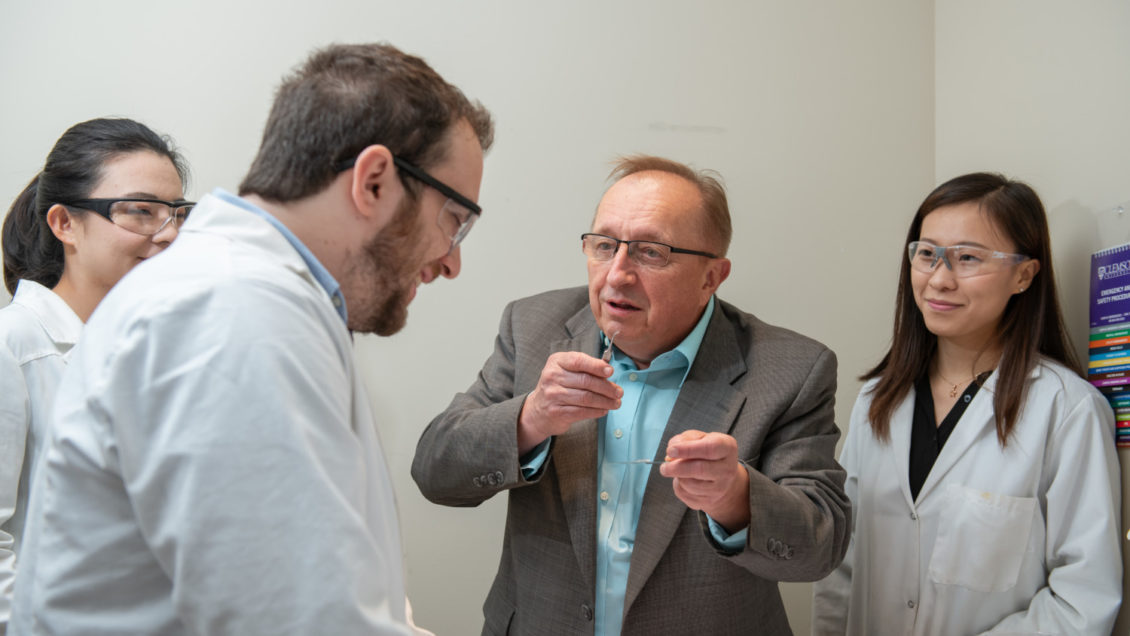A professor whose work could lead to paint that heals itself like skin has written a review for a highly selective publication, sharpening the focus on Clemson University’s excellence in materials science research.
Marek Urban’s review on self-healing polymers appears in the latest edition of Nature Reviews Materials.

Self-healing polymers are a type of smart material that repair their own damage without help. They could lead to a host of futuristic technologies, such as car paint that heals its own scratches, smartphone screens that fix their own cracks and hip implants with extended lifetimes.
The review that Urban co-authored with graduate student Siyang Wang describes how self-healing polymers work and how living organisms could inspire new advances in the field.
“The big takeaway is that self-healing polymers have a tremendous future, driven by economics, sustainability and green chemistry,” said Urban, who serves as the J.E. Sirrine Foundation Chair and Professor.
Reviews aim to be balanced and objective analyses of selected topics. For Urban, publication brought to an end nearly a year of writing, editing and rigorous peer review.
Kyle Brinkman, chair of the Department of Materials Science and Engineering, said that Urban was an excellent choice to provide an overview of the current state of research into self-healing polymers.
“Dr. Urban’s reputation speaks for itself,” Brinkman said. “His piece in Nature Reviews Materials is the latest confirmation that he is among the world’s foremost leaders in the field of self-healing polymers. The review will help spread the word about what we at Clemson already know– that we have some of the best materials scientists and engineers in the world.”
Urban’s research has been featured in several high-impact publications, including a 2018 article in the journal Science. He has been honored by several professional organizations. Most recently, he was elected fellow of the American Association for the Advancement of Science.
Urban recently sat down with Ideas Monthly to elaborate on his research. Here are some of the highlights:
In what areas might everyday people first experience self-healing polymers?
Any coating is a good subject for self-healing. When you make a scratch, it will self-heal by itself. You name it– paints, coatings– anything on a surface. It doesn’t have to be a coating. It can be a plastic, larger object. A multibillion industry will be impacted by this. I think that what attracted the editors of this journal to us is that our project is very different, very simple, but no one thought that may work.
You came to Clemson about 10 years ago. I’m sure you had many options. Why did you choose Clemson?
The main attractive feature was the environment and collegiality. Just like the Clemson president says, we are one family. Plus, from a research perspective I needed more engineering. I am a scientist. You can make as many materials as you want, but if you don’t find a use, they will be essentially sitting under the rug and nobody will notice.
What’s next for you?
Self-healing research is not going to be forever. At some point, everything will become a commodity. And that will be a success story because then we can say, “Hey, we contributed to Earth in some positive way.” That’s one thing. But I’m also getting into a new arena of living materials where materials will have similar functions as biological systems. This is where you get into things like signaling and communications between different polymers. Can they talk to each other, compute, store information? I’d love to start a large materials science center where we can study those materials, and we are pursuing it.
To read the Nature Reviews Materials piece, click here.
Get in touch and we will connect you with the author or another expert.
Or email us at news@clemson.edu

